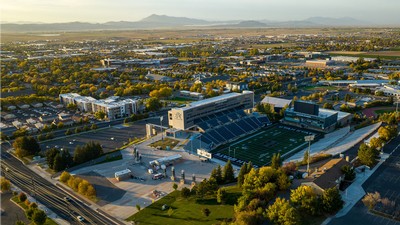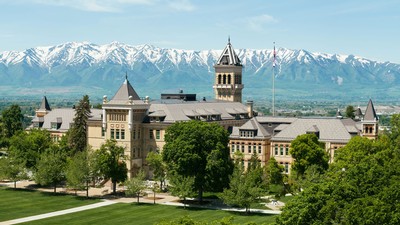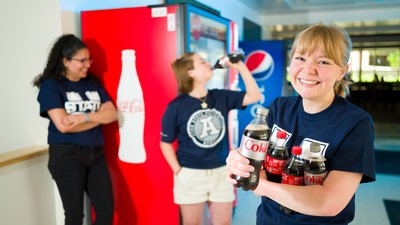New LADAR Technology Promises Sharper Aerial Views
By Jessica Jarman |
Researchers, Scott Budge, Bikalpa Khatiwada and Trevor Welch, at Utah State University's Center for Advanced Imaging LADAR are changing the way we see the world.
Researchers at Utah State University’s Center for Advanced Imaging LADAR are changing the way we see the world.
A team of electrical and computer engineers at the center, known as CAIL, are developing a breakthrough technology that will enhance the images acquired from LADAR sensors. The team designed an inexpensive LADAR sensor and camera package that can be integrated into an unmanned aerial vehicle. They also developed a patented algorithm that enhances the LADAR data so it more accurately represents the terrain below. The work will lead to clearer images used to support precision agriculture, watershed science and public safety.
LADAR, sometimes referred to as LiDAR, stands for light detection and ranging. A LADAR sensor detects the distance to an object using a light pulse.
“The method involves sending a light pulse, the light pulse reflects off of an object and returns to the sensor in a certain amount of time,” said Trevor Welch, a senior in electrical engineering. “You can use the time it took that pulse to travel and the speed of light to calculate the distance to the object.”
The researchers have also produced two papers on the subject that have been accepted to the SPIE Defense + Commercial Sensing conference in April. CAIL director and associate professor of electrical and computer engineering, Scott Budge, says the new sensor package could radically change LADAR usage around the world.
“The purpose of our project is to be able to generate these images in a much less expensive way,” he said. “So rather than spending thousands of dollars to generate a textured map of the ground, we can do it in hundreds of dollars.”
By adding a color photograph to the LADAR data points, researchers at USU can generate textured elevation maps that are scientifically accurate. The system can be used for various applications including department of transportation infrastructure surveys, agriculture surveys and disaster management.
The CAIL team is also working on LADAR projects designed to fit into off-road military vehicles. Budge says the center offers an excellent educational experience to students at USU.
The center recently received major funding from the Utah Science Technology and Research Initiative. For more information, visit cail.usu.edu.
Cal Coopmans, AggieAir director and research assistant professor, installs a small LADAR sensor package to an unmanned aerial vehicle.
WRITER
Jessica Jarman
Student Writer
College of Engineering
eng.marketing@usu.edu
CONTACT
Scott Budge
Associate Professor
Electrical and Computer Engineering
435-797-3433
scott.budge@usu.edu
TOPICS
Research 898stories Engineering 347stories Innovation 92storiesComments and questions regarding this article may be directed to the contact person listed on this page.








